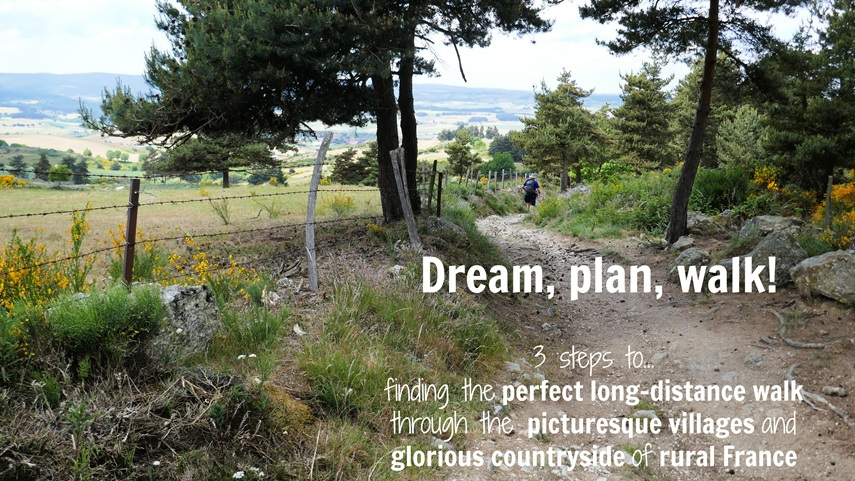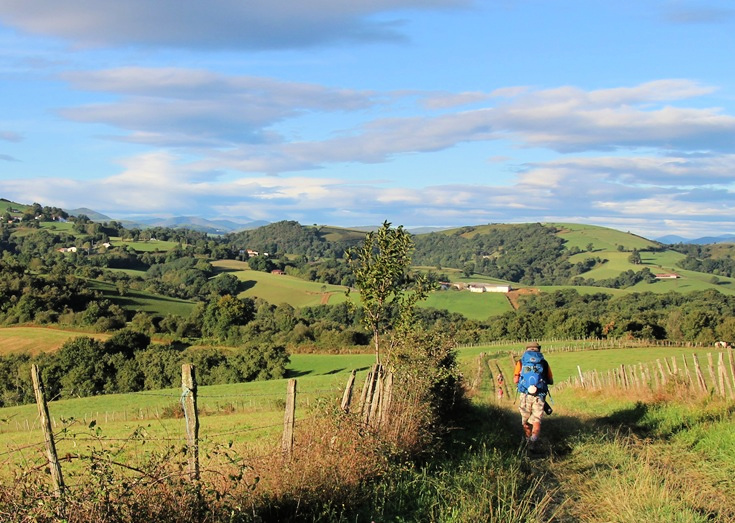
(First published June 2016, last updated July 2025)
There is nothing I love more than wandering through the French countryside on a sunny day. Taking a few precautions in order to stay safe, such as carrying sufficient food and water supplies, taking extra care when walking alone or walking along a road, and learning enough of the language to ask for help or directions if lost ensures a smooth and enjoyable walk.
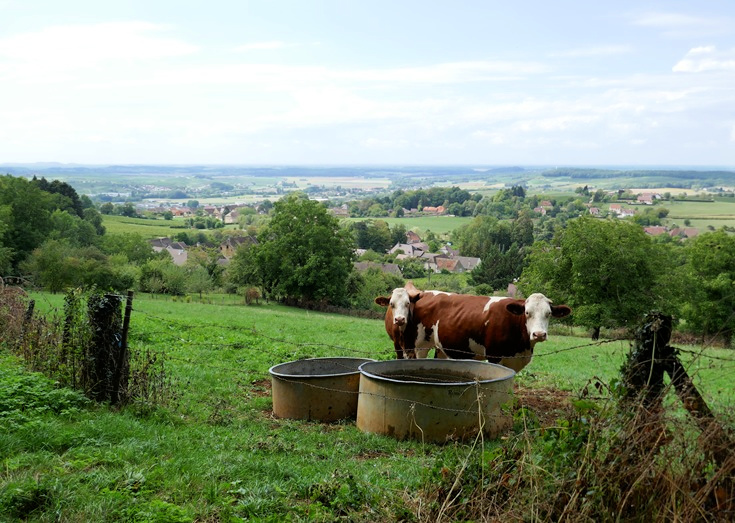
Food and water supplies
As with all outdoor activities, it’s important to remember the sunscreen and always take as much water as you can comfortably carry each day. Refill your water bottles whenever you get the chance—in some tiny villages, it can be surprisingly difficult to find water or even the café listed in your guidebook. If you find yourself running low, you’ll find a source of drinkable water in the local cemetery (this is required by French law).
Water which has been treated and is safe to drink will be marked Eau potable. If water is marked non potable, do not drink it.
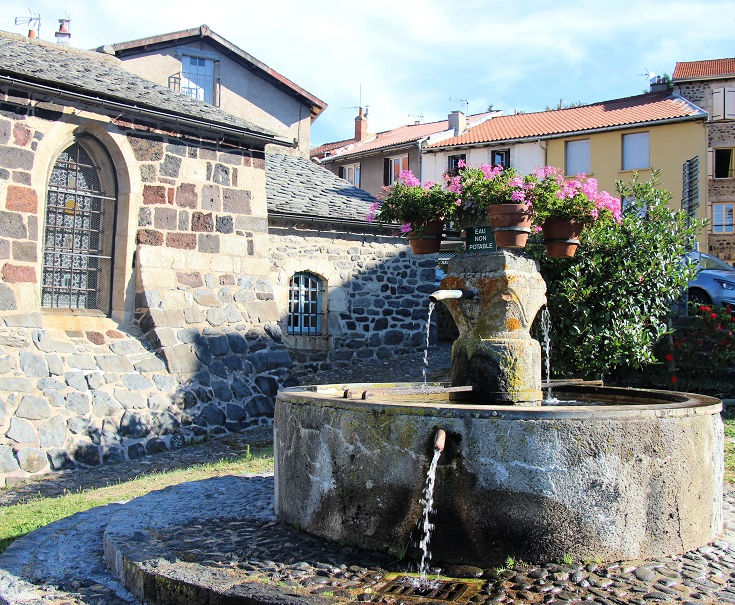
As tempting as it may be to fill your water bottle from this charming fountain, the water has not been treated and is clearly marked EAU NON POTABLE
As you set out each day, remember that bakeries and grocery stores will close at lunchtime and may not reopen until as late as three in the afternoon, as well as closing for a full day (usually Monday, and often Sunday) each week. On other days, you may find small cafés and roadside food stalls closed for a variety of reasons—the owner is sick, has ducked out to pick the children up from school, or the villagers are attending the funeral of a much-loved local (as has been my experience more than once!).
Treat every open café as a delightful surprise!
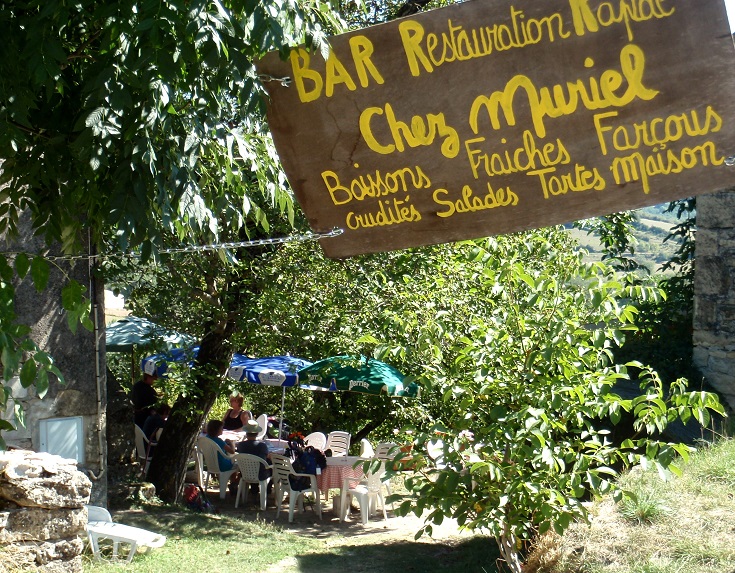
Chez Muriel, a few kilometres before Saint-Côme-d’Olt, serves a delicious farçous and is a popular stop on the Chemin de Saint-Jacques.
To avoid being caught with no food, buy supplies before you leave town each morning. You’ll find a wide range of sandwiches available at the local boulangerie and, no doubt, a tempting array of tarts and pastries awaits you at the patisserie.
Of course, a good supply of trail mix—protein bars, nuts and dried fruit will last several days and cover any emergencies.
The usual rules of etiquette apply when walking in France—always take your rubbish with you.
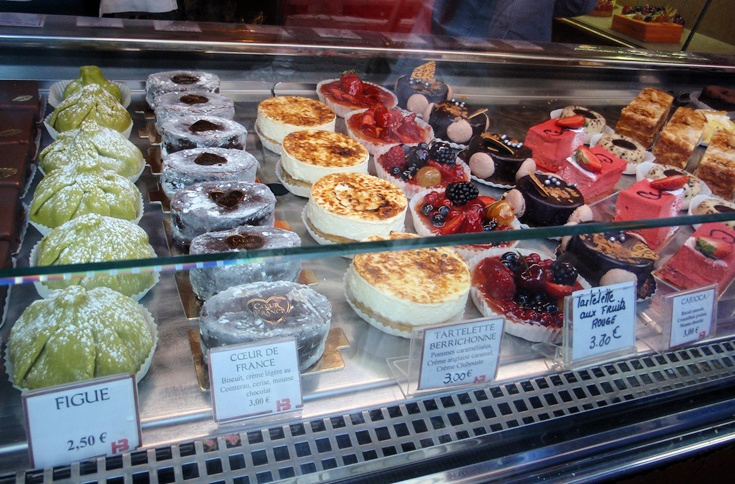
Learn a little of the language
If I could give you just one tip to make your visit to France a memorable experience, it would be this—smile a lot and say bonjour Monsieur or bonjour Madame to everyone you encounter, including your host, the shopkeeper, the pharmacist, the bus driver…
The French are incredibly generous, friendly and helpful and will always welcome any attempt to converse in their native language. They also place a high value on politeness and, although it may not be common practice where you live, a friendly bonjour as you enter a shop and an au revoir or merci, bonne journée as you leave will be appreciated.
The Useful French Phrases section of your I Love Walking in France guidebook includes all the basics—yes, no, please, thank you and will also assist you with asking for help, booking a room or a taxi, buying a train ticket, enquiring about breakfast or asking for a table at a restaurant. It also includes a list of the words I have found most useful when asking for directions or describing a walk—left, right, climb, descend, continue etc.
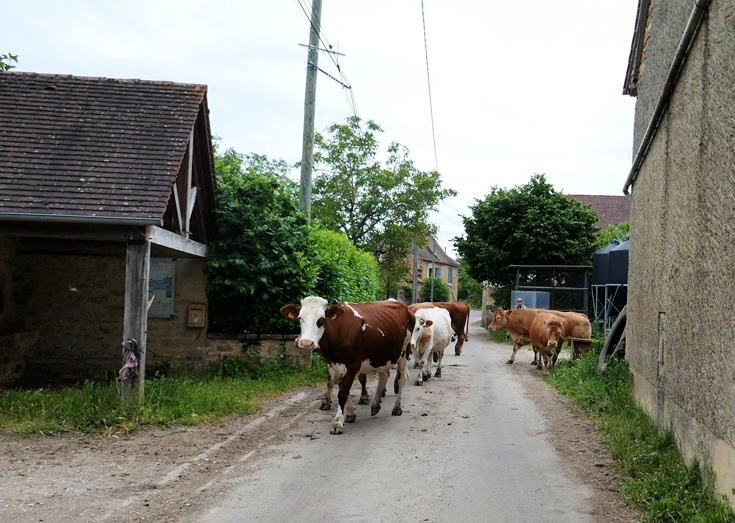
Cows leaving the milking shed and headed out to pasture block a quiet country road near Loubressac
Walking safely along a road
As you study the IGN maps for alternative routes, you’ll find several instances where detouring onto a quiet local road can significantly reduce the distance, and in these instances, I have found the following guidelines will keep me safe.
Roads which link towns are shown in orange on the IGN map and often carry a lot of fast-moving traffic. In many cases, there is only a narrow shoulder on which to walk and these roads should be avoided wherever possible. (You’ll find most orange roads can be viewed on Google maps using Street View and this is a useful way to check the conditions and assess the traffic.)
Roads shown in white on the IGN maps are often only used by local farmers to gain access to an orange road. The traffic will likely be very light and I don’t hesitate to plan alternative routes along these roads.
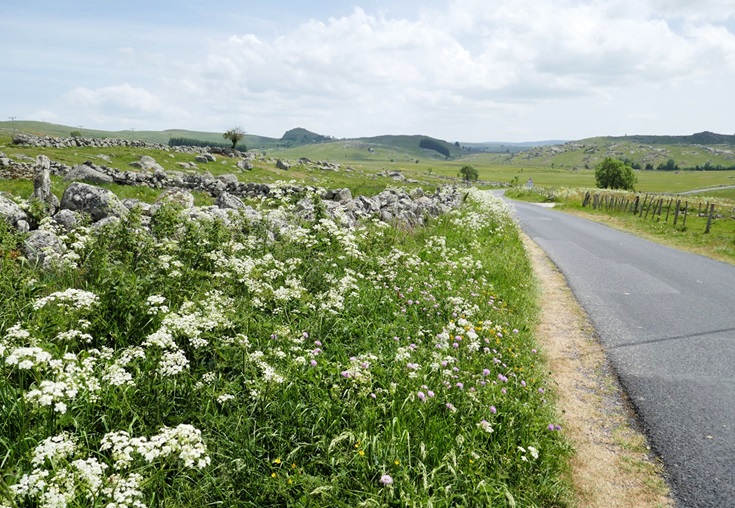
Traffic in France travels on the righthand side of the road. If there is no verge, walk on the left side, into the oncoming traffic. If you see a car, coming from either direction, get off the road sooner than you think is necessary and stand still until the vehicle has passed (no sense in tripping over onto the road).
The only exception to walking on the left is where this reduces visibility for you and for the passing traffic. If the left side of the road hugs the incline of a hill and curves left, cross the road as necessary to maximise visibility for yourself, and for drivers coming from both directions.
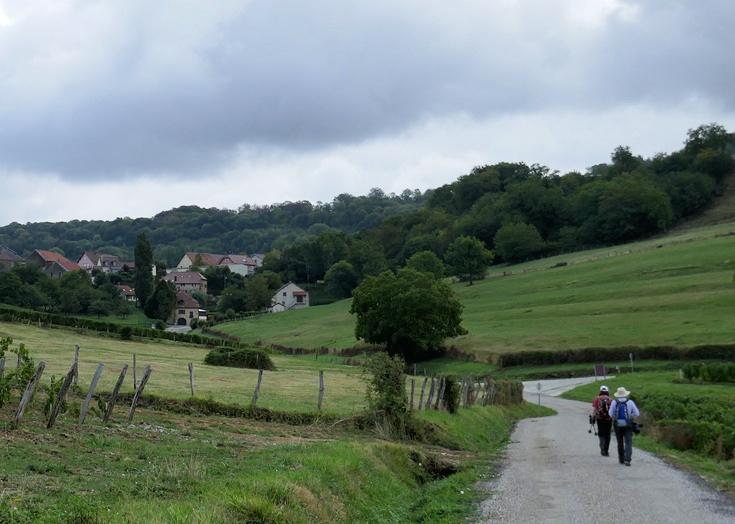
Is it safe to walk alone?
Feeling safe while walking alone is a common concern, particularly among women. Perceived danger may come from other people or from the risk of being injured and unable to find help.
As a woman in her sixties who has walked both alone and with friends for over ten years, I can say without hesitation that I have never felt uncomfortable or in any danger from other people while walking in France. I do sometimes get lonely if I’m walking on my own and for me, the presence of other walkers is reassuring—both from a safety perspective and because it offers the opportunity for a chat. But sometimes, walks like these are partially about learning how we behave outside our comfort zone and that’s all part of the journey!
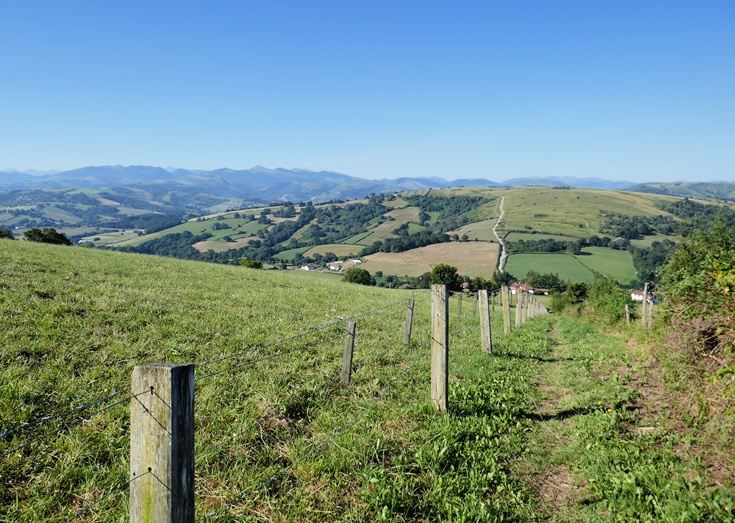
Alone in the foothills of the Pyrénées with the glorious French countryside all to myself
The greater concern, for me, if walking alone is being injured and unable to get help. If this is true for you also, there are a few precautions which will minimise the risk:
- Carry a basic first-aid kit containing large Band-Aids or a bandage and enough water to wash a wound.
- Carry a mobile phone and know the phone numbers for emergency services (Medical emergency: 12, Police assistance: 17 and general emergencies throughout Europe: 112)
- Install an app on your phone, such as Iphigénie (a paid subscription service available for both Android and Apple phones), which will show your location relative to the path and nearby roads, and know how to take a screen shot and forward it to another device.
- Know the phone number for your night’s accommodation and contact your host. They may be able to organise help for you. (The screen shot will help with locating you, but also keep a mental note of villages and landmarks you pass.)
- Let your family or friends at home know your plans and check in with them on a regular basis. Agree on a length of time between contacts that will indicate something is wrong.
Several of the walks on this website offer a solitary experience, ideal for contemplation and reflection. I’ve walked l’Échappée Jurassienne and from Martel to Rocamadour (with friends but) without encountering another walker. On weekdays, I walked the coast of Brittany by myself, but on weekends I shared the path with hundreds of locals out for some fresh air.
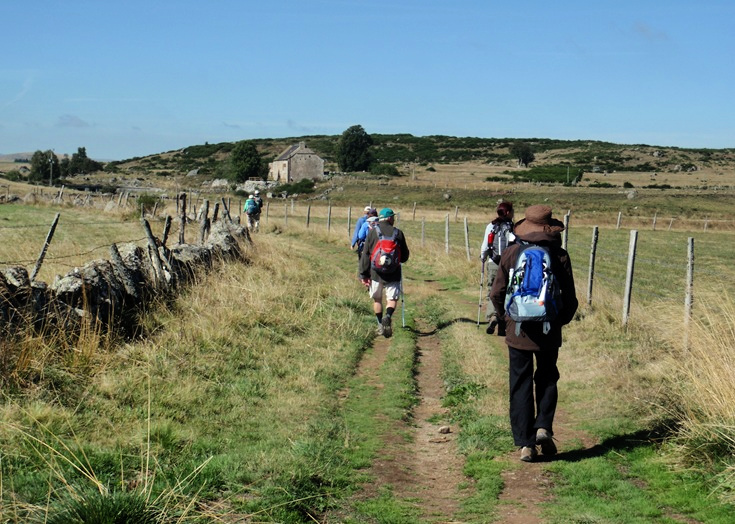
There is no shortage of company on the Chemin de Saint-Jacques between Lasbros and Montgros
If you prefer the comfort and security of knowing there are other walkers not too far away, the Chemin de Saint-Jacques du-Puy and the Chemin de Stevenson have a fair amount of foot traffic. It was very rare for me not to be able to see another walker a few hundred metres ahead or behind me and I feel confident that if I were injured, someone would find me within an hour or two at most.
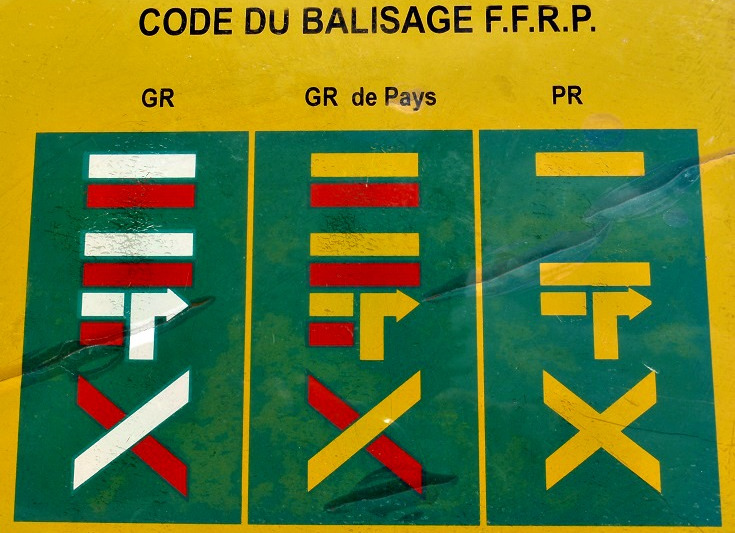
Getting lost
Walking trails in France are very well marked, and although I have wandered off the path on more than one occasion, I have to confess this is usually due to a lack of attention on my part (also known as too busy chatting with my walking buddy).
Nevertheless, there are a few signs to look out for if you suspect that you are no longer on the correct path:
- If you haven’t seen a red and white stripe for twenty minutes or so, it may be time to retrace your steps and return to the last marker.
- If the condition of the path deteriorates significantly, return to the last marker and check the signs. Paths are generally safe and well maintained, and while there may be recent unrepaired damage, if you suddenly find yourself crossing a stream with no bridge or stepping-stones, or alongside a busy road, you may have missed a turn.
- Always double check the yellow signs, especially on walks where several GR paths merge, diverge and intersect.
- At each intersection, there will be trail markers indicating correct direction (stripes) and wrong way (cross). Sometimes, the markers will be a little way down the path, so you may need to walk a short distance in each direction to confirm the correct path.

As the GR 70 Chemin de Stevenson leaves Le Puy-en-Velay, it shares the path with several other GR paths. Despite stopping to take a photo of this sign, we still, inexplicably, wandered off the GR 70 and followed the GR 3F Sentier de la Loire, adding several kilometres to our first day of walking.
If you do get lost or wander off the path, rest assured you won’t be the first to do so. Adding a kilometre or two to your walk can be frustrating, especially on a hot day, but is a good reminder to pay attention and look out for the signs.
A final note on walking considerately—always leave gates, open or shut, as you found them.
Many more practical tips for long-distance walking
